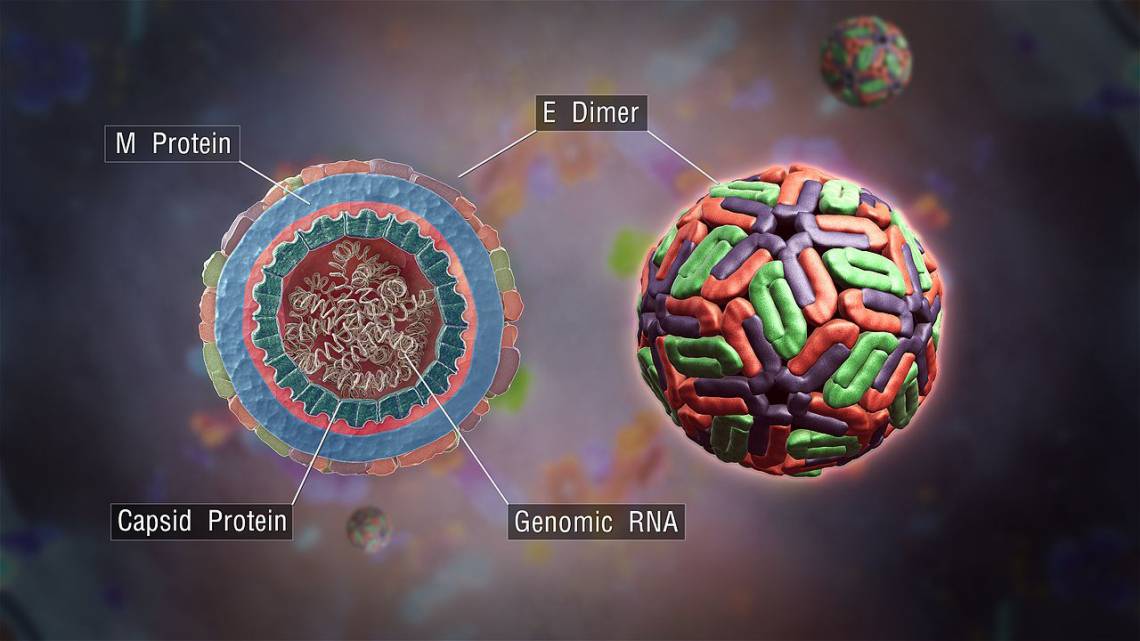
SINGAPORE – Researchers led by Duke-NUS Medical School have discovered that tryptase, an enzyme in human cells that acts like scissors to cut up nearby proteins, is responsible for blood vessel leakage in severe dengue hemorrhagic fever.
The finding, which comes from experiments with mice and human cells in culture, suggests a possible new treatment strategy using the tryptase inhibitor, nafamostat mesylate, for severe dengue disease – a potentially fatal condition for which no targeted treatment is currently available.
The dengue virus infects about 390 million people globally each year, causing substantial morbidity and mortality. While most patients experience dengue fever or a mild form of the disease, a small percentage develops dengue hemorrhagic fever (DHF), the more severe occurrence of dengue wherein blood 'leaks' from ruptured blood vessels. This can lead to dengue shock syndrome (DSS) – the final stage of DHF – where the circulatory system fails, sending the body into bleeding and shock, which is fatal without prompt treatment.
It hasn't been clear how dengue patients go on to develop these severe conditions and, as a result, no targeted treatments have been developed to prevent hemorrhaging or reverse shock in infected patients.
By studying human blood vessel cells cultured on microscope slides, "we discovered that, in severe cases, a particular enzyme called tryptase cuts the proteins that act as seals between blood vessel cells, resulting in blood vessel leakage and shock during dengue infection," said Assistant Professor Ashley St. John, from Duke-NUS' Emerging Infectious Diseases Programme.
Based on this finding, the team wanted to know if a drug specific to inhibiting tryptase could be used to treat the hemorrhaging. Nafamostat mesylate, a clinically-approved tryptase inhibitor with a good safety profile, was tested in mice.
They found that administration of this drug, which is already used for the treatment of certain bleeding complications in some countries, prevented vascular leakage in the dengue mouse models. Even delayed treatment with the drug was significantly effective in reducing vascular leakage in a mouse model of severe disease.
The team also studied blood samples from dengue patients in Indonesia and Sri Lanka and observed tryptase levels were very high in the blood of severe dengue patients who experienced hemorrhagic fever, but low in patients who easily recovered, affirming the link between high levels of the enzyme and severe dengue disease.
"Currently, only supportive care is available to patients suffering from severe dengue disease, with no targeted treatment for this potentially fatal condition," St. John said. "We believe our findings raise the possibility of developing new targeted treatments for dengue and, specifically, one that might be able to prevent shock."
"We are currently experiencing a surge in dengue cases in Singapore," said Professor Patrick Casey, Senior Vice Dean for Research at Duke-NUS. "This timely study by our researchers not only holds out hope for a promising new strategy to treat severe dengue disease, but could also have broader implications for the treatment of other haemorrhagic diseases."
The study authors say the next step is to conduct clinical trials in humans to test if tryptase inhibitors can reverse dengue vascular leakage and prevent shock.
CITATION: Rathore APS, Mantri CM, Aman SAB, Syenina A, Ooi J, Jagaraj CJ, Goh CC, Tissera H, Wilder-Smith A, Ng LG, Gubler DJ and St.John AL (2019). Dengue virus-elicited tryptase induces endothelial permeability and shock. Journal of Clinical Investigation. DOI: 10.1172/JCI128426






